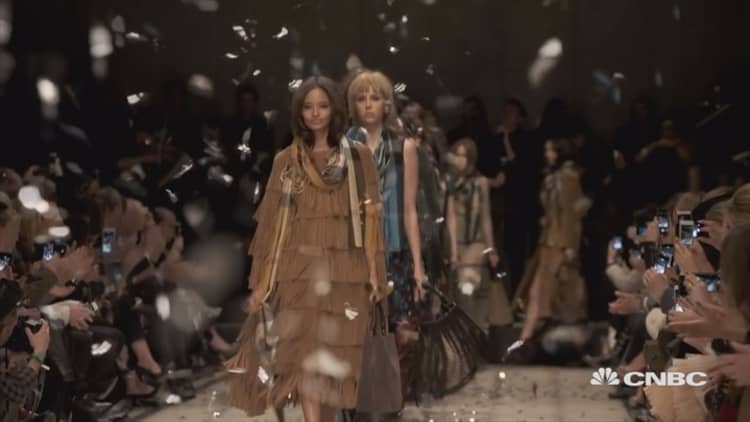Uri and Rebecca Minkoff are used to being trendsetters.
But when the brother-sister team made the bold choice to once again show their spring collection this February — a time that's traditionally reserved for designers' fall looks — they didn't expect their decision would disrupt the industry so quickly.
Since the design duo said in December they would challenge fashion norms by holding runway shows timed with the current season (thereby allowing shoppers to immediately purchase these looks), designers including Tom Ford, Burberry and Misha Nonoo have followed suit.
What's more, the Council of Fashion Designers of America trade organization retained the Boston Consulting Group to determine if there's a better way to do business in a world of Instagram and fast fashion. But perhaps most importantly, they've accelerated the conversation that a change needs to be made.
"It seems like once a year we get the chance to try something big," CEO Uri Minkoff said. "[But] we didn't think it would be this impactful this year."
To be sure, designers and others in the industry have long been talking about the need to change the structure of fashion week. After Ford launched his namesake women's collection in 2010, the designer famously put an embargo on his images so they wouldn't spread across the Internet. And last year, Proenza Schouler made the same decision regarding its pre-fall collection.
The idea is that by keeping these images under wraps, shoppers will view the designs as fresh when they finally go up for sale. As a result, they'll be willing to pay full price. What's more, cutting this extensive lead time makes it more difficult for fast-fashion retailers to duplicate designers' looks before they even hit their shelves.
"Being closer to wear now makes more sense because … unless you're a really high-fashion person, who wants to start buying fall and winter in July or June?" said Michael Appel, founder of Appel Associates consulting firm.
Though shifting the calendar seems logical, it also comes with challenges. The fashion industry has long relied on six-month lead times so that designers have sufficient time after their shows to meet with department store buyers, make requested tweaks to their looks, and get the pieces produced and on the racks.
Vincent Quan, an associate professor at the Fashion Institute of Technology, said that because many luxury items are handcrafted overseas, he's skeptical the industry could substantially shorten the amount of time it takes to produce these garments. However, one way of cutting it down would be to shift production back to the U.S., to eliminate the 30 to 45 days typically required to ship an item overseas, he said.
This is exactly the strategy Rebecca Minkoff is employing for her spring line. Though some of the looks that go down the runway Saturday will be repeats from her September show, many of which were crafted overseas, more than a dozen new pieces will be sprinkled into the lineup. These items were designed in December and put into production in L.A. and New York City shortly thereafter.

The benefits of this tactic are twofold. For one, it could eventually bring a larger chunk of manufacturing back to the U.S., as designers wouldn't have time for overseas deliveries. For another, it enables Minkoff to get a more up-to-the-minute read on weather trends, consumer preferences and popular colors or fabrics, and design into these factors.
This season, for example, the sudden drop in temperatures caused Rebecca Minkoff to design an oversize leather jacket in pale lavender, which "speaks to spring but keeps you warm." Because of these more informed decisions, which have been key to the success of fast-fashion retailers such as Zara, Uri Minkoff said the brand's capsule collection resulted in a 10 percent lift in sales to wholesale partners this season.
Along with the rest of the collection, these capsule items will be available for purchase immediately following the designer's show on Saturday (because spring deliveries come in three waves, not every look will be available to take home right away; those that aren't will be available for preorder).
To be sure, there are still plenty of challenges ahead in overhauling the fashion calendar. Quan said the shift must be adopted broadly, and not by just one or two brands. Not only that, many will require a complete overhaul of their supply chain, so they, too, can produce items closer to need. What's more, because fast-fashion retailers can replicate looks so quickly — sometimes in as little as two weeks — they will still be able to pull looks from the runway and sell them for hundreds or thousands of dollars cheaper, Quan said.
Despite these challenges, Uri Minkoff said he's pleased with how quickly the conversation surrounding Fashion Week has ramped up, and the potential that they will play such a key role in overhauling an outdated system.
"If we can help stimulate full-price consumer retail, then we've really done well," he said.





